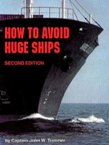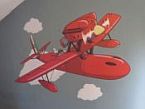crsutton
Posts: 9590
Joined: 12/6/2002
From: Maryland
Status: offline

|
quote:
ORIGINAL: Leandros
quote:
ORIGINAL: dr.hal
A concern might be appropriate if the planes were of a foreign origin, thus requiring unique tools (and measures, such as that foreign thing call "metric"!).
Not to talk about proper spares. My idea was that the Navy had planes with much the same equipment; engines, weapons. For example, it was found that many of the
Army A-24's, when being assembled in Brisbane after having arrived with the Pensacola convoy, had worn-out engines and tires. Technically, the Navy SBD's were
quite similar to the Army A-24's as were the Wildcat and P-36 engines. And, of course, their armament.
During assembly many of the A-24 forward machine gun trigger solenoids had been accidently thrown away. This shouldn't necessarily be a show-stopper,
the A-24's were, after all, dive-bombers. But there was quite a buzz generated to get new ones to Australia. Some were loaded on B-17's destined for The
Philippines. Unfortunately, these were held up on Hawaii. Of course, in my scenario they are not allowed to be delayed there.
Apart from that, it would be interesting to know how the spare situation was on the US Carriers. How many spare .50 caliber trigger solenoids did a carrier.....
carry...? How many spare SBD tires and Wright Cyclone Engines?
As important, would the carrier quartermaster at all allow the Army to make use of his hallow stock....?
Come on, guys!
Fred
Well except for the missing tail hook thing the A24 was about the same. The army planes could take off from a flight deck but not land. I would assume that any aircraft embarked for transport on a carrier-unless crated, would also be embarked with a minimum of spare parts and a few technicians who could advise the normal personnel on board ships. After all they would need to be kept running and one stuck on the flight deck was useless regardless.
_____________________________
I am the Holy Roman Emperor and am above grammar.
Sigismund of Luxemburg
|
 Printable Version
Printable Version

















 New Messages
New Messages No New Messages
No New Messages Hot Topic w/ New Messages
Hot Topic w/ New Messages Hot Topic w/o New Messages
Hot Topic w/o New Messages Locked w/ New Messages
Locked w/ New Messages Locked w/o New Messages
Locked w/o New Messages Post New Thread
Post New Thread